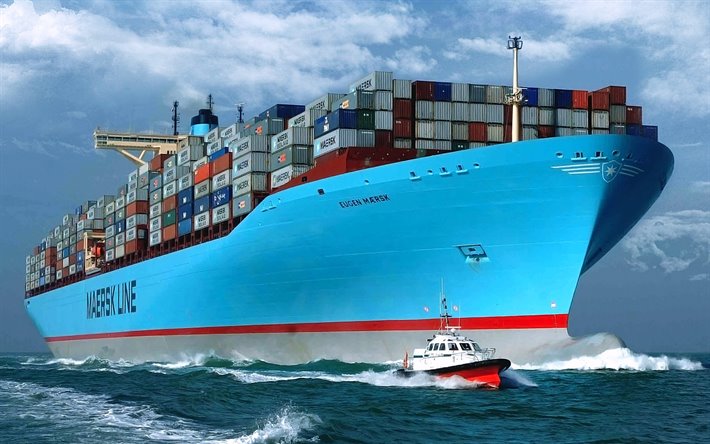It is very easy to transport nicely packaged boxes from one country to another and the switching between various modes of transport such as trucks, trains and ships is very convenient. This is exactly what containers do and ships designed to carry containers are called container carriers
Introduction
In the common usage of the term, the word container normally refers to an enclosed box of any shape which contains some substance. I know this is a very vague definition so let us refine it a bit to fit the shipping industry. Ships that carry containers or boxes measuring a specified size that contain cargo inside them are known as container carriers or container ships. This is another useful category of ships apart from the various types of ships discussed here including ROROs, Reefers, Tankers, Cruise Ships, FPSOs and DP Ships.
Container Ships
In the earlier days of the shipping industry bulk cargo was transported in ships having large cargo holds and these ships were known as bulk carriers. This is a satisfactory method for transporting large quantities of cargo such as say ore, grains etc but sometimes dry cargo needs to be segregated into smaller units each having its distinct owner and local destination.
Just imagine a hundred businessmen ordering let us say cloths from another country. Each businessman has his or her specific order and type of cloths. It would not be very easy to dump all this cargo into one cargo hold and segregate it

at the receiving end. A better choice would be to put the goods of one merchant into a container and label it as such. This would make the transportation and other related processes much easier.
This concept is what is used in container shipping and all the containers are of standard sizes and stored in an orderly fashion on the ship. Just take a look at the picture of a container ship and you will have an idea of how the container ship is designed. You will notice that unlike bulk carriers and tanker ships which carry the material inside their hatches (sometimes they can carry cargo on top as well like log carriers), the container ships carry cargo above the deck level as well apart from the containers in the hatches which may or may not be covered with hatch covers.
Another feature of these ships is that the small sized container ships usually have their own arrangement for loading/unloading of containers while the bigger ones normally depend on the shore facilities for this purpose.
TEU Explained
One term which you must understand in this regard is the Twenty Foot Equivalent or TEU. It refers to the capacity of a normal container which is 20 feet long, 8 feet wide and 8.5 feet high, though this size isn’t standardized and can vary from company to company.
The purpose of TEU is that it helps to find the equivalent when compared to other commonly available container sizes. For example if a container is 40 feet long, 8 feet wide and 8.5 feet tall it has a capacity of 2 TEU. Can you calculate the TEU of a container 48 feet long, 8 feet wide and 8.5 feet tall? (Answer is 2.4)
The chart below shows the typical TEU of container ships over the years and as you can clearly see in the picture that the TEU got nearly doubled every decade and the fifth generation of container ships have large TEU compared to their previous generations.



